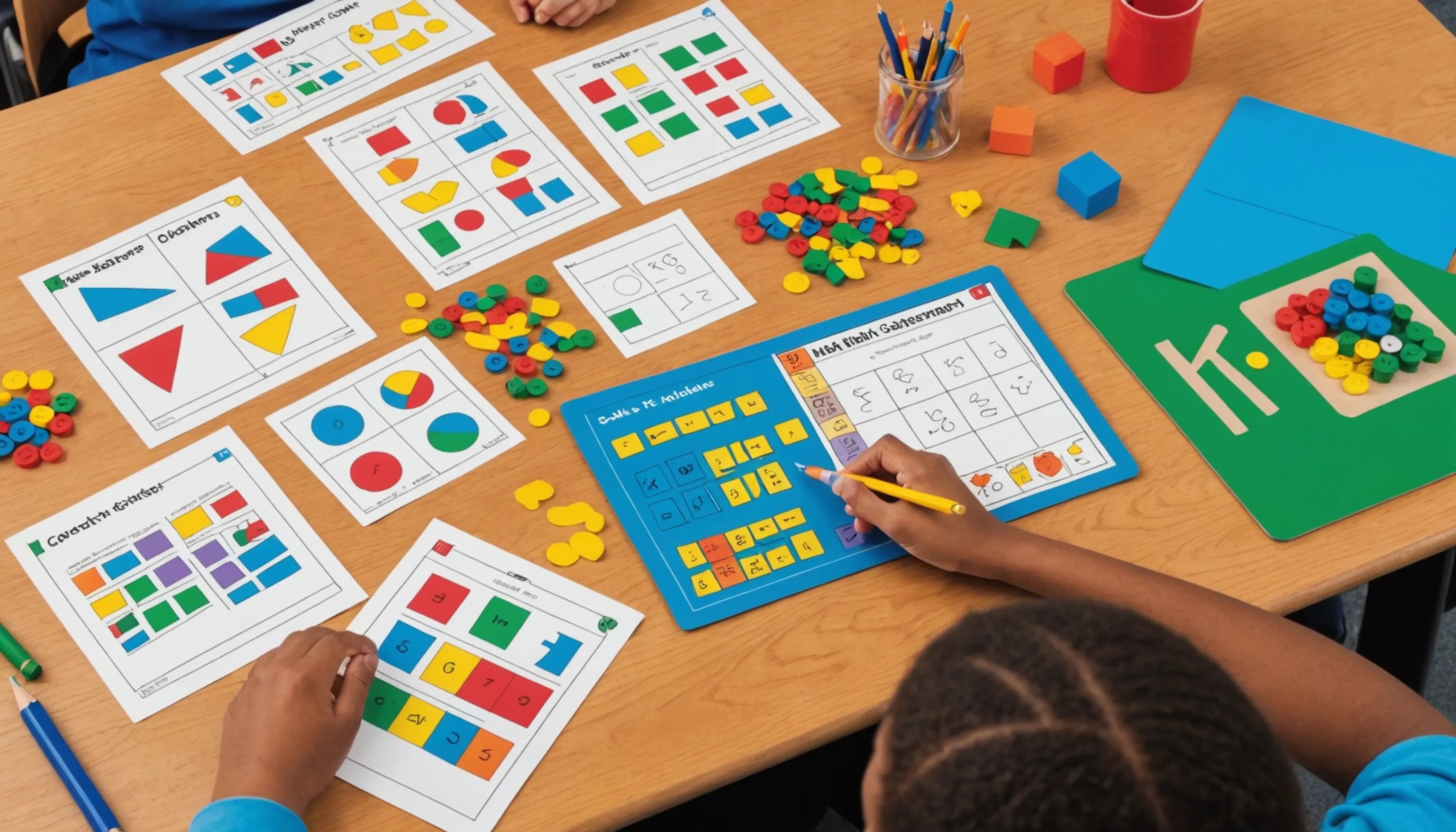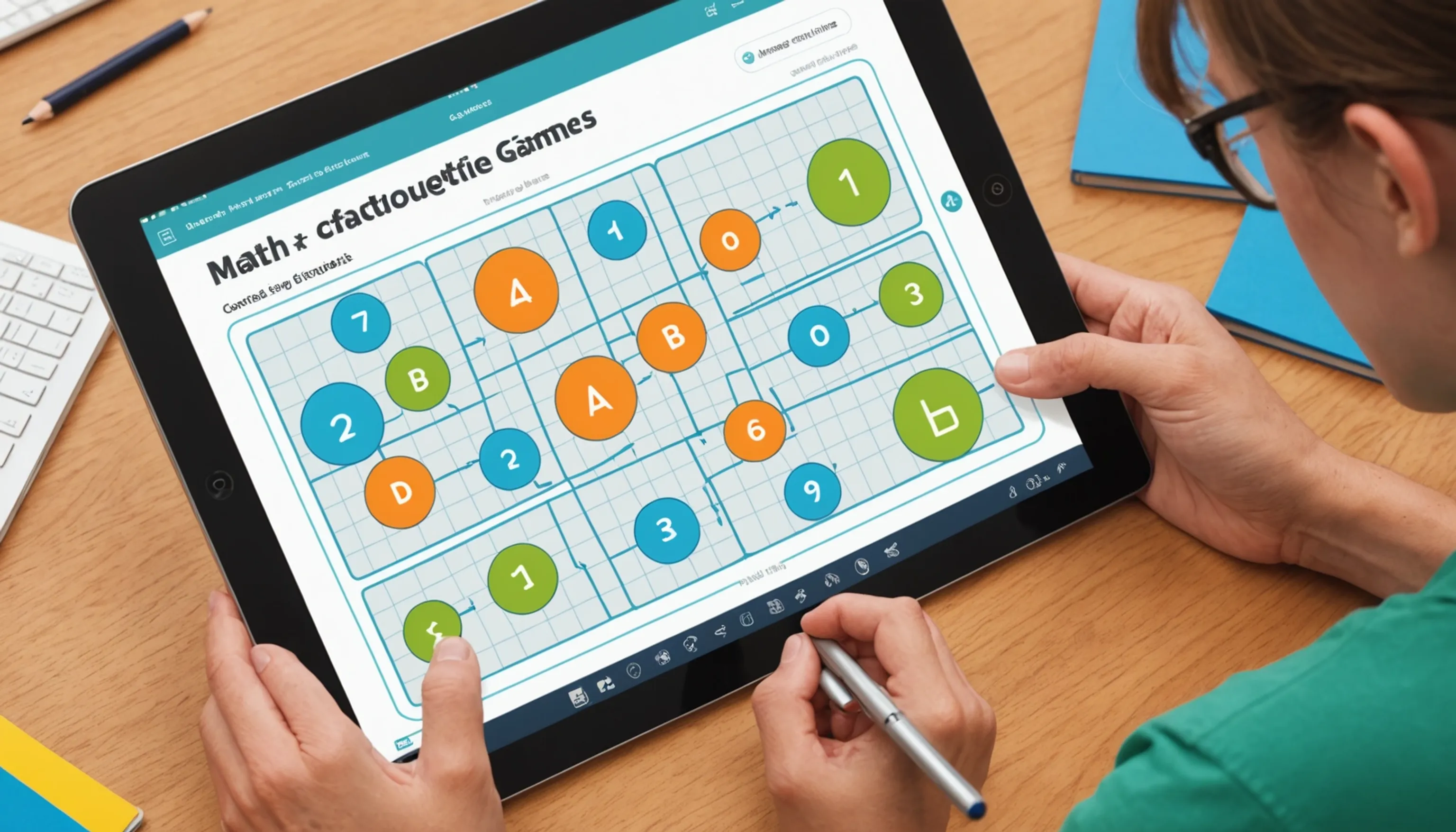How to Use Games to Teach Math Effectively
 HvWHenry van Wagenberg
HvWHenry van Wagenberg
Using Games to Teach Math Effectively
Using games to teach math effectively can transform the learning experience for students. Games engage teenagers by making math concepts more relatable and enjoyable. By integrating game-based learning, educators can create an interactive environment where students actively participate in problem-solving.
Moreover, games can reinforce important skills such as critical thinking and strategic planning. They allow students to apply mathematical concepts in a fun and low-pressure setting, which can lead to better retention and understanding.
Benefits of Game-Based Learning in Math
Game-based learning in math offers numerous benefits that enhance the educational experience for students. Firstly, it promotes engagement. Traditional methods may leave students disinterested, but games capture their attention and motivate them to participate actively in learning.
Secondly, games create a safe environment for mistakes. Students often feel less pressure when learning through play, allowing them to experiment and explore mathematical concepts without the fear of failure. This fosters a growth mindset, where students can learn from their errors.
Another benefit is the development of critical thinking skills. Many math games require players to solve problems, analyze situations, and make strategic decisions. This helps students enhance their problem-solving abilities, which are crucial not just in math but in real-life situations as well.
Additionally, game-based learning encourages collaboration among students. Many math games are designed for teams, promoting teamwork and communication as students work together to achieve common goals. This collaborative spirit not only builds interpersonal skills but also deepens their understanding of mathematical concepts through peer discussion.
Lastly, games can be tailored to align with individual learning styles. With a variety of game formats, educators can cater to diverse preferences, ensuring that every student can engage with math in a way that resonates with them.

Choosing the Right Math Games
Choosing the right math games is crucial for maximizing the benefits of game-based learning. First, it's important to consider the age and skill level of the students. Games should be appropriately challenging; they need to engage without overwhelming learners. For younger students, simple counting or addition games work well, while older students might benefit from games involving algebra or geometry.
Next, align the games with curriculum objectives. Ensure that the math games reinforce the specific skills and concepts you aim to teach. For example, if the focus is on fractions, select games that require students to add, subtract, or compare fractions. This alignment helps students see the relevance of the games in their overall learning.
Another important factor is the game format. Consider whether the game is solo, cooperative, or competitive. Cooperative games can enhance teamwork skills, while competitive games may motivate students who thrive on challenges. Additionally, look for games that allow for scaffolding, meaning they can be adapted for different skill levels within the same game.
Finally, take into account the availability of resources. Some games require minimal materials, while others may need specific technology or tools. Opt for games that fit within your classroom's resources and can be easily integrated into your lessons.
Incorporating Games into the Curriculum
Incorporating games into the curriculum can significantly enhance student engagement and learning outcomes. Start by identifying key math concepts that can be taught through games. Integrate these games into lesson plans by scheduling specific times for gameplay, ensuring it aligns with learning objectives.
Additionally, use games as a supplementary tool during review sessions or as rewards for completing challenging topics. Encourage students to collaborate in teams, fostering a sense of community while reinforcing mathematical skills. By making games a regular part of the curriculum, you create a dynamic learning environment that motivates students to excel in math.

Aligning Games with Learning Objectives
Aligning games with learning objectives is essential for ensuring that game-based learning is effective and purposeful. Start by clearly defining the learning objectives for your math curriculum. These objectives should outline the specific skills and concepts students need to master, such as addition, subtraction, fractions, or geometry.
Once you have established these objectives, evaluate potential math games to determine how they can support your goals. Look for games that explicitly focus on the skills you wish to teach. For instance, if your objective is to enhance students' understanding of fractions, choose games that require players to work with fractions in various contexts, such as adding or comparing them.
It's also important to consider the cognitive level of the games. Ensure that the games challenge students appropriately according to their skill levels. For example, younger students might benefit from games that focus on basic operations, while advanced learners may need games that involve complex problem-solving or critical thinking.
Additionally, integrate assessment methods to monitor how well students are achieving the learning objectives through gameplay. This can include informal observations during game sessions or more formal assessments following gameplay. Collecting feedback from students about their experiences with the games can also provide valuable insights into their effectiveness.
By carefully aligning games with learning objectives, you create a cohesive educational experience that enhances student learning while making math enjoyable.
Setting Up a Game-Based Learning Environment
Setting up a game-based learning environment is essential for fostering engagement and maximizing the benefits of learning through play. First, create a dedicated space in the classroom where students can comfortably participate in games. This area should be free from distractions and equipped with the necessary materials, such as game boards, cards, and technology like tablets or computers.
Next, establish clear rules and expectations for gameplay. Make sure students understand the objectives of the games, how to play, and the behavior expected during sessions. Setting these guidelines helps maintain a focused learning atmosphere while promoting respect and collaboration among students.
Additionally, consider the diversity of games you incorporate. Include a variety of formats—board games, card games, digital games, and interactive group activities. This variety caters to different learning styles and keeps students engaged. Group students strategically, pairing those who may benefit from working together and allowing for diverse interactions.
Moreover, integrate technology where applicable. Many educational platforms offer interactive math games that can enhance learning experiences. Ensure that any technology used is user-friendly and accessible to all students.
Finally, regularly rotate the games and activities to maintain interest and challenge students. By creating a dynamic and flexible game-based learning environment, you encourage students to actively participate and develop a deeper understanding of math concepts.
Monitoring Progress and Engagement
Monitoring progress and engagement in a game-based learning environment is crucial for assessing student development. Regularly observe students during gameplay to gauge their understanding and involvement. Take notes on how they interact with the games and each other, noting both successes and challenges.
Utilize assessment tools, such as quizzes or reflective journals, to measure learning outcomes after gameplay sessions. Encourage students to share their thoughts on the games and what they learned, fostering a culture of feedback. By staying attuned to their progress, you can adjust your approach and ensure that game-based learning remains effective and engaging.
Assessing Student Learning Through Games
Assessing student learning through games offers a unique approach to understanding student progress and mastery of mathematical concepts. Traditional assessments, like tests and quizzes, can be intimidating and may not accurately reflect a student's understanding. In contrast, games create a more relaxed environment where students can demonstrate their skills in real-time.
To assess learning through games, start by establishing clear learning objectives aligned with the games being played. This ensures that the games you choose directly support the skills you want to evaluate. During gameplay, observe how students approach problems, their decision-making processes, and their ability to apply mathematical concepts.
Incorporate formative assessments by asking students to explain their reasoning as they play. This can be done through pair discussions or group reflections, allowing students to articulate their thought processes and solidify their understanding. Additionally, consider using game scores or outcomes as data points to gauge student progress. However, it's essential to balance this with qualitative observations, such as collaboration and participation.
After gameplay, conduct a debriefing session where students can share their experiences and insights. This helps reinforce their learning and provides you with valuable feedback on the effectiveness of the games used. By assessing learning through games, you create a more dynamic and engaging learning experience that can lead to deeper understanding and retention of math concepts.
Encouraging Collaboration and Teamwork
Encouraging collaboration and teamwork in a game-based learning environment is vital for developing social skills and enhancing the learning experience. Here are several strategies to foster collaboration among students:
- Group Dynamics: Organize students into diverse teams, mixing different skill levels and backgrounds. This diversity helps students learn from one another and encourages peer support.
- Team-Based Games: Select games that require teamwork to succeed. Games that involve cooperative problem-solving or require players to strategize together promote collaboration. For example, math escape rooms or team challenges can be highly effective.
- Set Clear Roles: Assign specific roles within each team, such as a leader, timekeeper, or recorder. This structure helps students understand their responsibilities and fosters accountability within the group.
- Encourage Communication: Promote open communication among team members during gameplay. Encourage students to discuss their strategies, share ideas, and provide constructive feedback to one another.
- Reflection Sessions: After gameplay, hold reflection sessions where teams can share their experiences. Ask them to discuss what strategies worked, what challenges they faced, and how they overcame them. This reinforces the importance of collaboration and allows students to learn from each other.
By implementing these strategies, you create a supportive environment that encourages teamwork, helping students develop essential social skills while enhancing their understanding of mathematical concepts.
